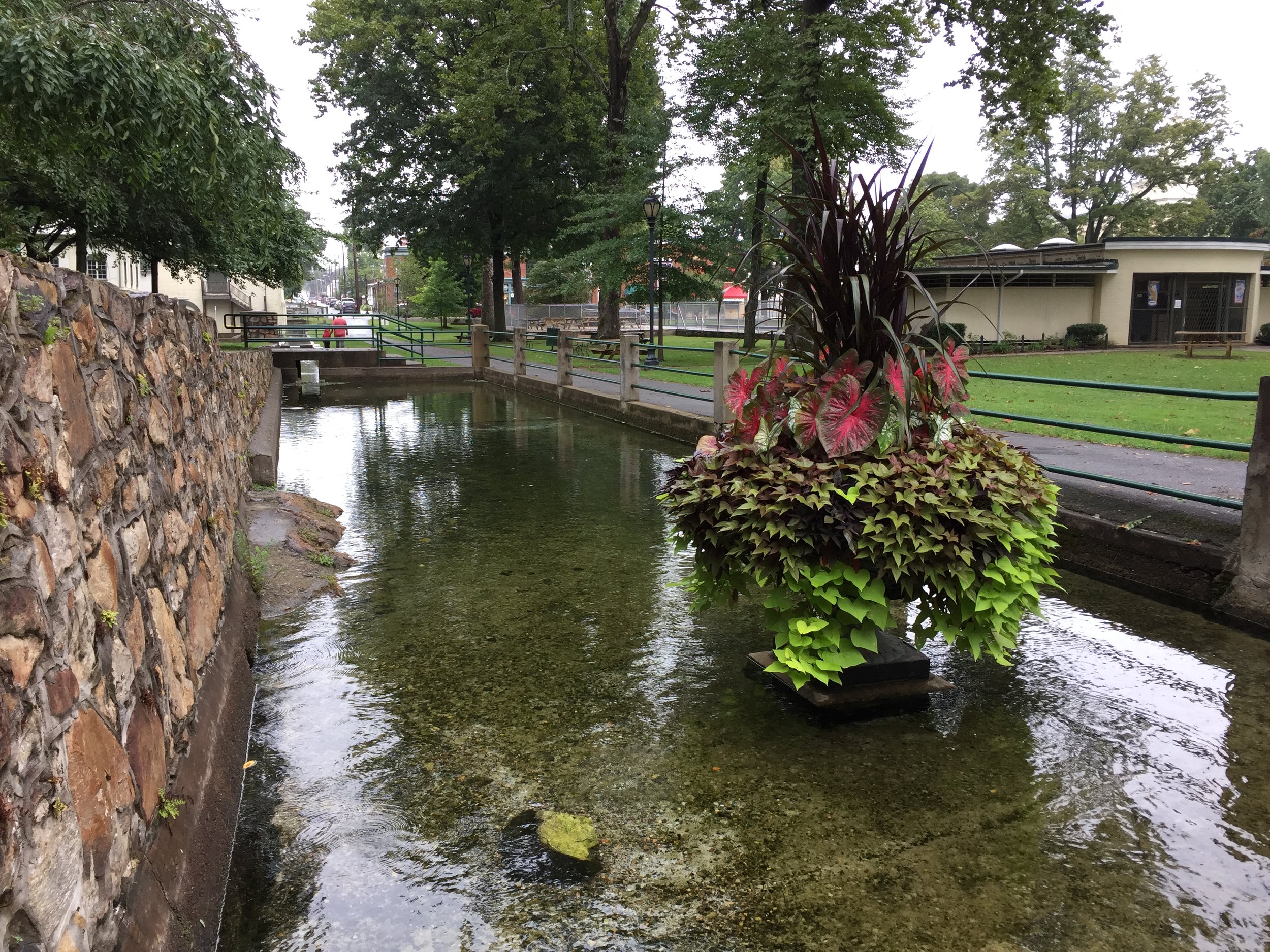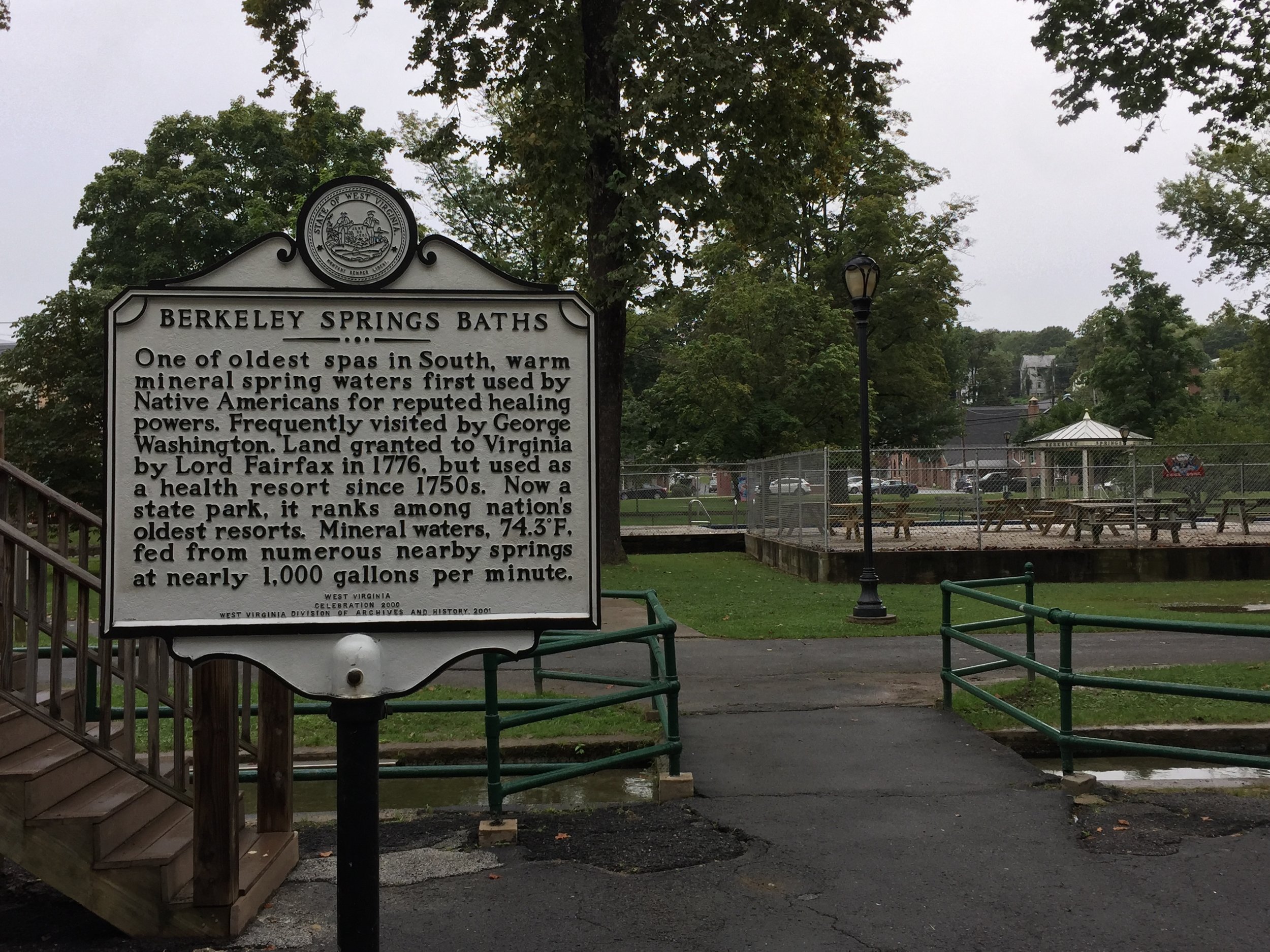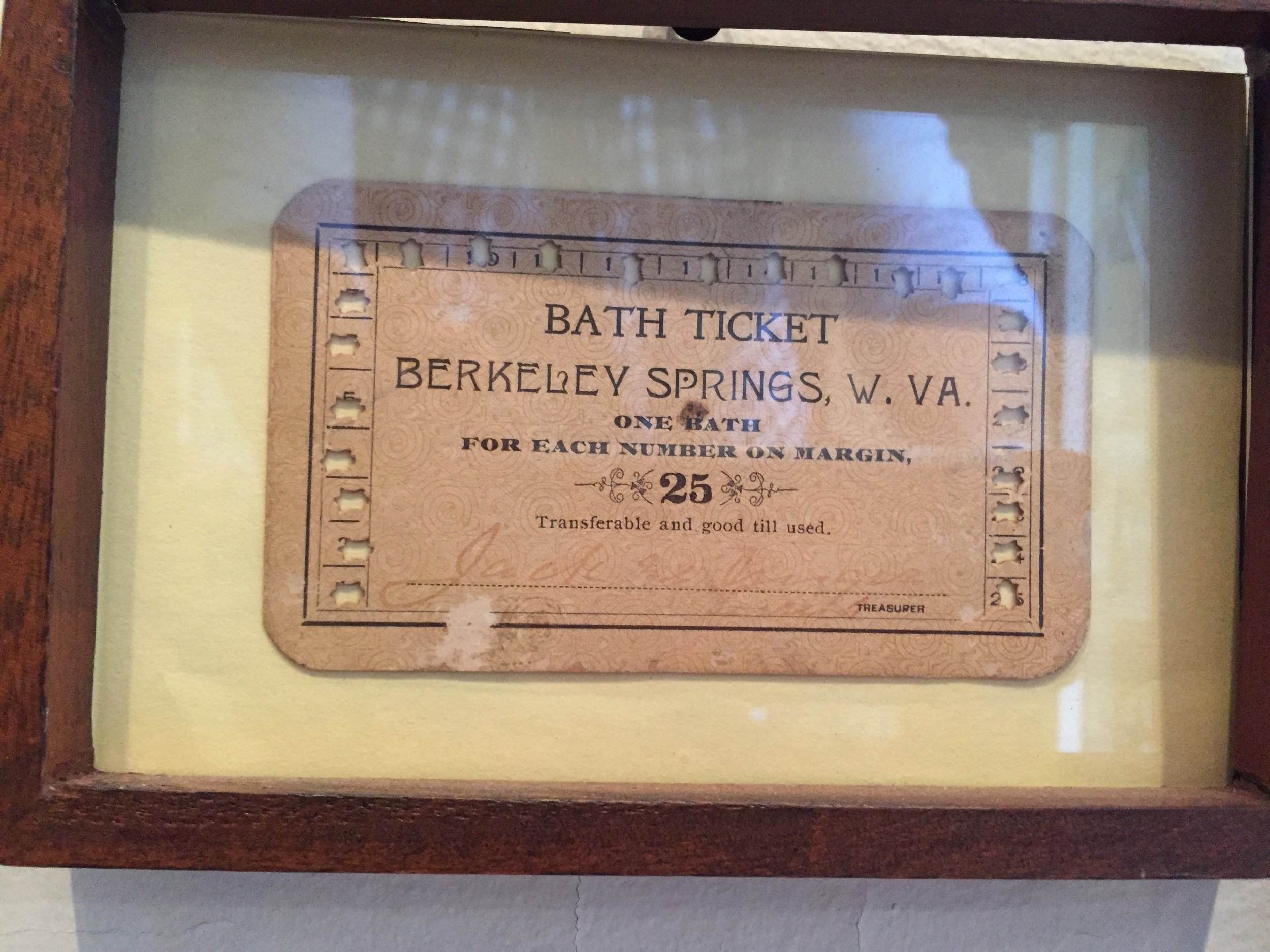Must Be Something In The Water
The Choose Clean Water Steering Committee meets with members of Warm Springs Watershed Association in Berkeley Springs, West Virginia.
“Without the water, there would be no town.” - Jeanne Mozier, Berkeley Springs resident and historian
While it may seem like we are constantly out of the office, the reality is our Coalition staff are usually stuck behind our desks during the year. Part of my job is to share the great work of our members, but rarely do I get to experience it first hand, which is why I was thrilled to be travelling to meet with some of our members in Berkeley Springs, West Virginia last week. While I knew we were going to be visiting the town and seeing member projects, I had no idea how much I would learn about not only our members but the power of water.
The History




The founding of Berkeley Springs can be traced back to the 1740s, when George Washington was sent to survey the Eastern Panhandle of West Virginia for Lord Fairfax. After their discovery, the warm springs were said to have medicinal benefits, and as early as the 1750s large bath houses and hotels began to pop up around the springs. The water became a destination for those seeking treatment for everything from anxiety to diabetes, and was even frequented by Washington himself! To this day, people have come to depend on the springs for not only treating their ailments, but also for their drinking water. As we stood learning about the springs, a line of people began to form to fill their empty gallon jugs at the spring’s spigot. As I stopped to take a photo, the woman in line turned to me and said, “it is the best water in the world.”
Pushing Up Daises
This rain garden is located at the bottom of Greenway Cemetery in Berkeley Springs. The project was made possible by funding from the National Fish and Wildlife Foundation.
All of this said, it probably comes as no surprise that the people who live in Berkeley Springs really value keeping their water clean, which could be why there has been such a push for more green infrastructure in the town. The first such project we toured was installed at Greenway Cemetery. Located just across the street from Warm Springs Run, it is a huge plot with a very steep slope. Certain paths and roads through the cemetery would frequently flood and caused cars to become stuck throughout the property. In 2016, Warm Springs Watershed Association worked with a variety of partners to install a rain garden at the bottom of the hill that collects an estimated 100,000 gallons of stormwater runoff during an average rainfall. Funding for the project was provided by a $50,000 Small Watershed Grant administered by the National Fish and Wildlife Foundation (You know, funding that comes from the $73 million for the Chesapeake Bay Program?), with additional financial support from the West Virginia Department of Environmental Protection, the West Virginia Division of Forestry and Region Nine. Over the past five years, more than 100 additional trees have been planted in the cemetery and they recently installed an innovative hügelkultur-inspired project, which may sound like a delicious German pastry, but is actually a project that will help to reduce flooding downstream.
Greening Main Street
This innovative project helped reduce flooding on one of the main streets in Berkeley Springs.
The next project we visited was a series of bioretention cells located along the historic main street of town. Recognizing that it would be almost impossible to create bump outs along the road, which is also a federal highway, the city decided to dig down. They installed permeable pavers that collect water underground for the plants in the bioretention cells to soak up, reducing the amount of water that goes directly into stormdrains. Residents in the town have noticed that when it rains, the ends of the road still flood, while this section of the road with the projects stays dry and allows businesses to stay open. The hope is to eventually install more of these projects along the roadway to help keep even more water from flooding the area and flowing directly into the local stream.
They say the springs are restorative, and although I didn’t have the opportunity to jump in, I did leave Berkeley Springs feeling rejuvenated. Being surrounded by our members who care so deeply about these issues helped to remind me why we all do what we do, why we show up, and why we will continue to show up, each and every day for clean water. Must be something in the water.
Kristin Reilly is the senior communications manager for the Choose Clean Water Coalition.



